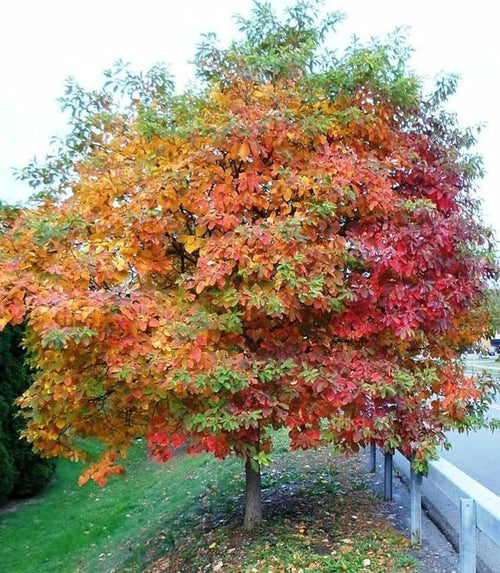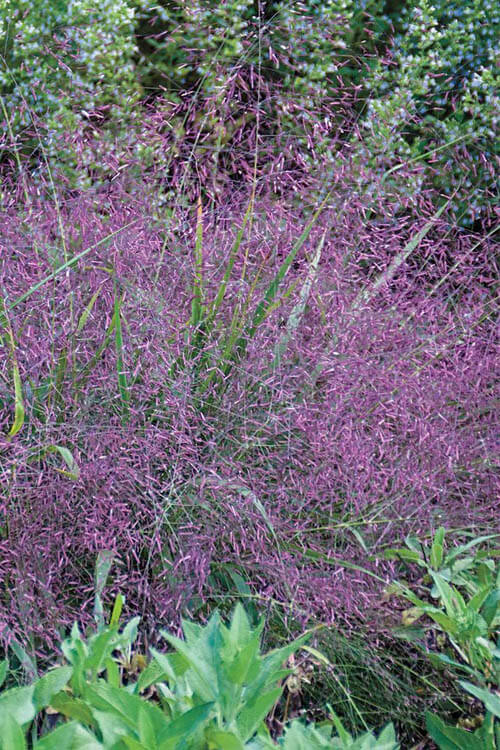- Common Garden Pests in Autumn: Identification, Prevention, and Control
Autumn is a beautiful season when nature undergoes a stunning transformation, with leaves changing colors and temperatures cooling down. However, it's also a crucial time for gardeners to be vigilant about common pests that can wreak havoc on their gardens.
As the seasons shift, so do the problems that can infest your garden
In this guide, we will explore the most common garden pests in autumn, how to identify them, and practical strategies for prevention and control. By arming yourself with knowledge, you can ensure your garden remains healthy and thriving throughout fall.
Aphids Aphids are among the most notorious garden pests and can be found throughout the year, including in autumn. These tiny, soft-bodied insects come in various colors, such as green, black, and brown. They often cluster on the undersides of leaves and the tender new growth of plants.
- Identification: Small, pear-shaped insects, usually less than 1/8 inch long. Often found in clusters on leaves and stems. Depending on the species, aphids may be green, black, brown, yellow, or pink.
- Prevention and Control: Encourage natural predators like ladybugs, lacewings, and parasitic wasps, which feed on aphids. Regularly inspect your plants and hose off aphids with a strong jet of water.
Whiteflies Whiteflies are small, flying insects, mainly active in warm autumn weather. They are named for their white, moth-like appearance and feed by sucking plant juices, which can cause yellowing leaves and a sticky substance called honeydew. Whiteflies can transmit plant viruses, making them a significant threat to your garden's health.
- Identification: Small, white, winged insects. Infest the undersides of leaves. When disturbed, they often fly up in a cloud of tiny white insects.
- Prevention and Control: Use yellow sticky traps to catch adult whiteflies. Introduce natural predators like parasitic wasps or ladybugs.
Slugs and Snails Autumn's damp and cool conditions provide the ideal environment for slugs and snails. These li creatures have a voracious appetite for young, tender plants. They feed by scraping holes in leaves and stems, leaving a telltale trail of slime behind.
- Identification: Slugs and snails are usually active at night or during rainy periods. Slimy trails on the ground or plant surfaces. Ragged holes in leaves and stems.
- Prevention and Control: Handpick slugs and snails during the evening or early morning. Create barriers using copper tape or diatomaceous earth around plants. Apply slug and snail baits sparingly, following package instructions.
Spider Mites Mites can cause significant discomfort to plants in autumn. You don't can be identified by the fine webbing they produce on the leaves. Spider mites feed by puncturing plant cells and sucking out the contents, leading to stippled, discolored leaves and reduced plant vigor.
- Identification: Fine webbing on the undersides of leaves. Tiny, speck-sized pests that may appear red, green, or brown. Damage occurs as stippling or mottling on leaves.
- Prevention and Control: Increase humidity in the garden to discourage spider mite infestations. Use a strong jet of water to wash mites off plants.
Cabbage Worms Cabbage worms are a common garden pest in autumn, particularly in gardens that grow brassicas like cabbage, broccoli, and kale. These green caterpillars are voracious eaters and can quickly decimate your crops if left unchecked.
- Identification: Bright green caterpillars with a pale stripe down the back. Feed on the leaves of cabbage family plants. The adult form is the white cabbage butterfly, which lays eggs on plants.
- Prevention and Control: Cover susceptible plants with row covers to prevent egg-laying. Handpick and destroy cabbage worms as you find them. Apply organic pesticides like Bacillus thuringiensis (B.T.) as a last resort.
Earwigs Earwigs are nocturnal insects known for their pincer-like appendages at the rear of their bodies. While they are not always harmful to garden plants, they can feed on various vegetation, including leaves, flowers, and fruit.
- Identification: Pincer-like appendages at the rear of the body. Usually brown or black. Active at night and hide in crevices during the day.
- Prevention and Control: Place rolled-up newspaper traps near affected plants to capture earwigs. Remove debris and mulch from around plants to reduce hiding places. Use natural predators like birds and ground beetles to control earwig populations.
Leafhoppers Leafhoppers are small, wedge-shaped insects that feed on plant sap. While they are not always a significant threat to garden plants, some species can transmit diseases to crops like tomatoes and potatoes.
- Identification: Wedge-shaped insects, often green or brown. Quick, jerky movements when disturbed. It may leave a honeydew residue on plants.
- Prevention and Control: Remove weeds and grasses around the garden to reduce leafhopper habitat. Use reflective mulch or aluminum foil to deter leafhoppers.
Grasshoppers Grasshoppers can be a severe pest of the autumn garden, especially in dry regions. These giant jumping insects feed on various plants, including vegetables, flowers, and ornamental shrubs.
- Identification: Giant insects with strong hind legs for jumping. Usually green or brown, but coloration can vary. Chew irregular holes in leaves and can consume large amounts of foliage.
- Prevention and Control: Handpick grasshoppers when they are present in small numbers. Use row covers to protect vulnerable plants. Apply biological control methods like predatory birds or parasitic wasps.
Rodents As temperatures drop in autumn, rodents such as mice and rats may seek shelter and food sources in your garden. These pests can gnaw on plants, eat fruits and vegetables, and damage the garden's infrastructure.
- Identification: Signs of gnawing on plants, fruits, or garden structures. Small burrows or holes in the ground. Droppings and tracks near feeding sites.
- Prevention and Control: Remove potential hiding places and debris where rodents can nest. Use traps or bait stations to capture rodents. Consider natural predators like owls or cats to deter rodent activity.
Fruit Flies Fruit flies can be a nuisance in autumn when ripe fruits and vegetables are abundant. They are attracted to the sweet aromas of ripening produce and can quickly infest your kitchen and garden.
- Identification: Tiny flies with red eyes and a tan or brown body. Presence near overripe or rotting fruits and vegetables. Eggs laid on the surface of fruits and vegetables.
- Prevention and Control: Harvest fruits and vegetables promptly when they ripen. Use fruit fly traps or vinegar traps to capture adult flies.
Conclusion
Autumn brings its unique challenges to gardeners, with various pests that can threaten the health and productivity of your garden. However, with proper identification, prevention, and control measures, you may protect your plants and maintain a thriving garden throughout the season. Remember that integrated pest management (I.P.M.) techniques, which combine various strategies like biological control, cultural practices, and the use of pesticides as a last resort, are the most effective way to manage garden pests in a sustainable and environmentally friendly manner. You can enjoy a bountiful and pest-free autumn garden by staying vigilant and employing these strategies.



















































